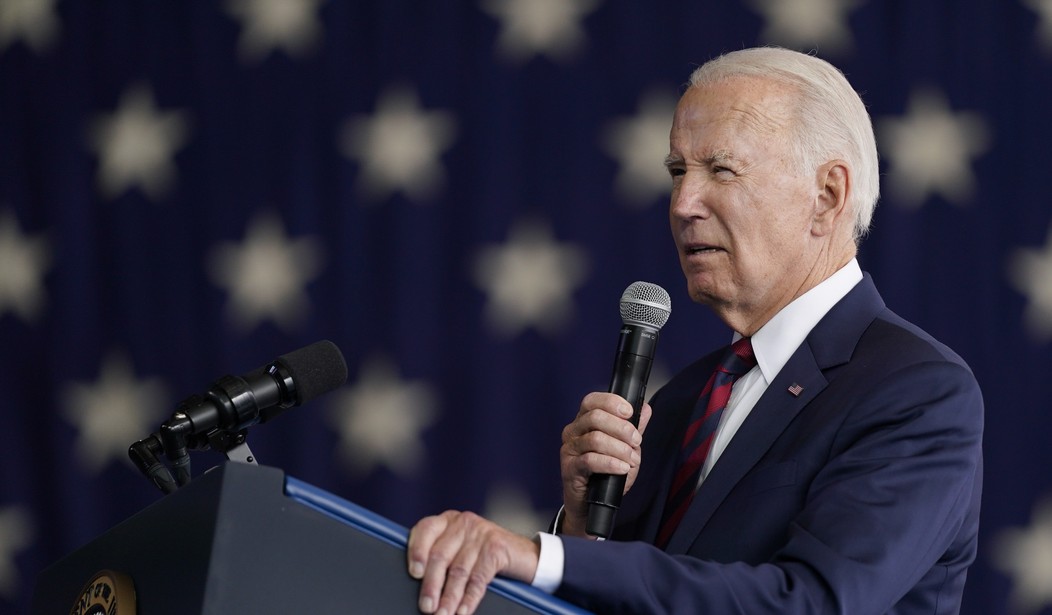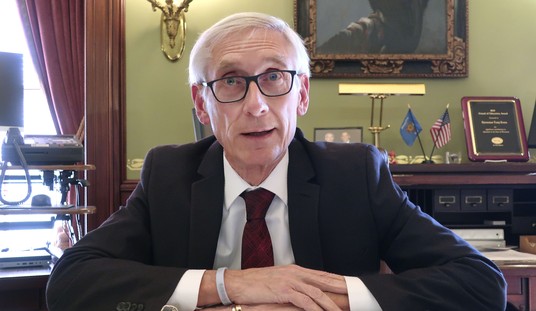As election season approaches, Democrats are touting the economic results of Biden administration policies aimed at improving the lives of working Americans and creating a more equitable economy. But ordinary Americans aren't feeling the so-called success of "Bidenomics."
Superficially, the economy looks solid. As measured by real GDP, it increased at an annual rate of 2.1% in the second quarter of 2023. While August's unemployment rate rose to 3.8%, that's still considered full employment by economists. Wages are rising, and we are often told that we're in a manufacturing boom.
But these numbers need perspective. Because we lost millions of jobs during the pandemic, employment growth was inevitable. Many of the jobs lost were going to come back as the economy reopened. Unemployment is low, but only because the economy is drunk on spending that is simultaneously closing many people out of the labor force. What's more, inflation-adjusted median household income has declined -- from $76,330 in 2021 to $74,580 in 2022. Labor tensions and strikes are also intensifying.
With all this in mind, is the average American becoming better off?
These troubles are caused in part by inflation, which continues to take its toll. Per the Consumer Price Index (CPI), year-over-year inflation rose to 3.7% in August, nudging back up after peaking at 9.1% not long ago. "Core" CPI (excluding food and energy) is down slightly to 4.3%. Although these numbers are an improvement after we experienced their highest levels since 1982, they remain disturbingly high.
Recommended
This is bad news for Americans who have seen their standard of living fall since early 2021. The Bureau of Labor Statistics (BLS) reported real average hourly earnings declining in 2021 and 2022, meaning Americans can afford less with their hard-earned dollars. More than three-quarters of people's income is devoted to living expenses like housing, transportation and food -- all of which have become more expensive. Food prices, for instance, rose by 19.3%. Shelter rose by 16.5% since 2021. Gasoline prices are up too.
Inflation is a tax on every American's standard of living. It's also a regressive tax. Low-income workers tend to experience higher-than-average levels of household inflation. Making matters worse, high interest rates resulting from the Fed's fight against inflation also hit lower-income Americans the hardest. These tend to consume a higher proportion of such incomes and take money from the pockets of people who hold assets in cash or low-yielding bank deposits. In other words, inflation creates the opposite of an equitable economy.
By now, it's well-known that Bidenomics' big spending has fueled higher inflation, resulted in larger-than-projected deficits and contributed to a record level of government debt. The most recent estimate of the full-year deficit for 2023 is $1.5 trillion, up from $946 billion last year. Total federal debt is now more than $33 trillion, an increase from $28.5 trillion in 2021. Budget tensions led the credit agency Fitch Ratings to downgrade Treasury debt based on prospects of further fiscal deterioration. This is not great, seeing as federal borrowing is projected to be $120 trillion in the next 30 years.
The prospect of gigantic, never-ending deficits during good times is making investors nervous. Borrowing costs like mortgage and car loan rates are rising, as are yields on benchmark 10-year treasury notes. They're now above 4.3%, their highest level since 2007 -- more especially heavy burdens on lower-income Americans.
Finally, while America may be experiencing a hike in real construction spending, that's a far cry from a manufacturing boom. According to the Institute for Supply Management Report on Business, in August, economic activity in the manufacturing sector contracted for the tenth consecutive month following 28 months of growth. Moreover, manufacturing only accounts for 11% of GDP. Even if this sector was growing, the benefits wouldn't be widely shared.
Nor will Bidenomics' manufacturing subsidies help workers with college degrees. These handouts are benefiting companies, often big and rich ones, for projects they would have likely taken on anyway. Take the Inflation Reduction Act, for example. About half of all projects included in the Act were announced before it was passed. The private green market was booming even before the subsidies. The remainder of those subsidies overwhelmingly benefit rich consumers of electric cars and other Biden-favored products.
Taken together, these facts can help explain the president's low approval ratings and the American people's overall pessimism about the direction of the economy. With so many working people feeling pinched, who can blame them?
























Join the conversation as a VIP Member